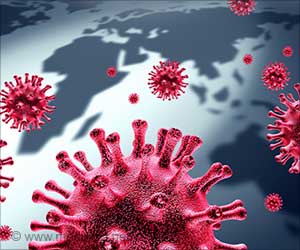Researchers are developing a high speed COVID-19 test that can be done with a smartphone.

Biomedical engineering professor Jeong-Yeol Yoon, who led the team, aims to combine the speed of existing nasal swab antigen tests with the high accuracy of nasal swab Polymerase Chain Reaction (PCR) tests.
The method developed will be used along with a saline swish-gargle test created by Michael Worobey.
The research team believes their method provides cheaper and simpler detection, Traditional methods for detection pathogens are often expensive, involve laboratory equipment or require scientific expertise. The smartphone-based test simply involves a smartphone, a microscope and a piece of microfluidic paper (a wax-coated paper that guides the liquid sample to flow through specific channels).
"We've outlined it so that other scientists can basically repeat what we did and create a norovirus-detecting device," said Lane Breshears, a doctoral student. "Our goal is that if you want to adapt it for something else, like we've adapted it for COVID-19, that you have all the ingredients you need to basically make your own device."
The process takes about 10-15 mins and involves introducing antibodies with fluorescent beads to a potentially contaminated water sample. If enough particles of the pathogen are present in the sample, several antibodies attach to each pathogen particle. Under a microscope, the pathogen particles show up as little clumps of fluorescent beads, which the user can then count. The process - adding beads to the sample, soaking a piece of paper in the sample, then taking a smartphone photograph of it under a microscope and counting the beads - takes about 10 to 15 minutes. It's so simple that Yoon says a nonscientist could learn how to do it by watching a brief video.
The researchers plan to partner with testing facilities to fine-tune their method as they adapt it for COVID-19 detection. The main goal of the researchers is to distribute the device to campus hubs so that any average person could test saliva samples from groups of people.
University of Arizona President, Robert C. Robbins, commented "This promising technology could allow us to provide fast, accurate, affordable tests to the campus community frequently and easily. We hope to make it a regular part of our 'Test, Trace, Treat' strategy, and that it will have a broader impact in mitigating the spread of the disease."
Source-Medindia













